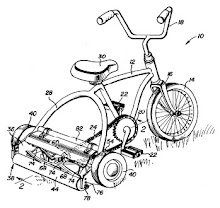As electrification hit the world, we started to see more and more powered home appliances replace their hand-cranked equivalents. Motors were expensive, and a few manufacturers tried to popularize the idea of the modular "home motor" which could be moved from vacuum to blender to as needed. Motor prices quickly dropped, and today my immersion blender/food processor/smoothie mixer/hand blender all contain their own inefficiently-deployed integrated electric drive. The trend lives on today in the dizzying array of KitchenAid accessories that will happily repurpose your blender's motor into an ice cream maker or a bread kneader. But we've basically moved away from the shared motor vision.
It is with this context in mind that I look to the recently-announced padfone as well as more established category players like the atrix lapdock and the asus transformer. As mobile phones become increasingly powerful, the major value-add of a desktop/tablet/notebook/tv is in its greater output (big screen) or input (mouse/keyboard) possibilities. It's a natural geek response to be horrified at the inefficiency of duplicating multiple processors and storage arrays when all you want is a different i/o set.
As one of those geeks, I find the combination-dock concept tremendously appealing. Start with a powerful mobile phone, which accompanies me everywhere except while swimming laps. When I'm on the couch or the subway, slide that same phone into a bigger screen to create a tablet. When I need to work, tack on a keyboard and trackpad. Heck, Ubuntu even wants to let you turn your phone into a full-on linux desktop! Re-use the radio, data plan, processor, memory, and gps instead of paying for the same core components again and again. Voila, efficiency and modularity!
Tidy as the idea is, I wonder if it will have staying power. The shared components are not the major cost drivers of our electronics; the IHS estimate for the iPad 2 shows that the processor, radios, cameras and memory account for only about 1/3 of its bill of materials. (It's mostly the screen and enclosure.) Price is not announced for the upcoming padfone accessories, but the Atrix lapdock costs about the same as the netbook that it subsumes. If consumers move to such modular, configurable devices it won't be to save money.
So what are these convertible accessory-packs good for? Will the future resemble the traveler's briefcase with a phone, laptop, e-reader, and camera? Or my work station with its laptop and K/V/M docking station? I'm not sure, but it will be fun to watch this play out.

